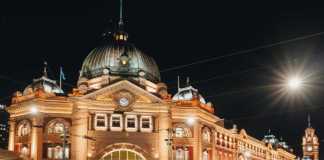The landscape of northern Australia’s Kimberley region is spectacular. The visual impact of seeing: rocky red cliffs and soaring gorges, lovely sunsets and dramatic rugged coastline with deserted beaches is mesmerising. When looking for Kimberley attractions, where do you start?
Not a lot has changed since the time when Australia was part of Gondwana. The Kimberley is a destination abundant with wildlife sanctuaries, gorges, waterfalls, beaches and thousands of years of Aboriginal culture. One of the oldest landscapes on the planet, the Kimberley region is a wilderness frontier of 423,000 square kilometres. In Broome and the Bungle Bungles, it’s easy to imagine yourself as an early pioneer, a buccaneer or a character in an outback movie.
Contents
- The Kimberley Region
- 15 Things To Do In The Kimberleys
- 1- Discover The Kimberley Coast
- 2- Explore Broome
- 3- Visit Kununurra
- 4- Drive The Gibb River Road
- 5- Explore At El Questro Station
- 6- Go Fishing For Barramundi
- 7- Go Horseriding At Home Valley Station
- 8- Hike The Bungle Bungles
- 9- Go Glamping At Eco Beach
- 10- Tour Cygnet Bay Pearl Farm
- 11- Stay At Mitchell Falls Wilderness Lodge
- 12- See Wildlife At Mornington Wilderness Camp
- 13- Lie By The Pool At Emma Gorge
- 14- Sleep In A Safari Tent At Home Valley Station
- 15- Visit The Pilbara
- How To Get To The Kimberley
- 15 Things To Do In The Kimberleys
The Kimberley Region
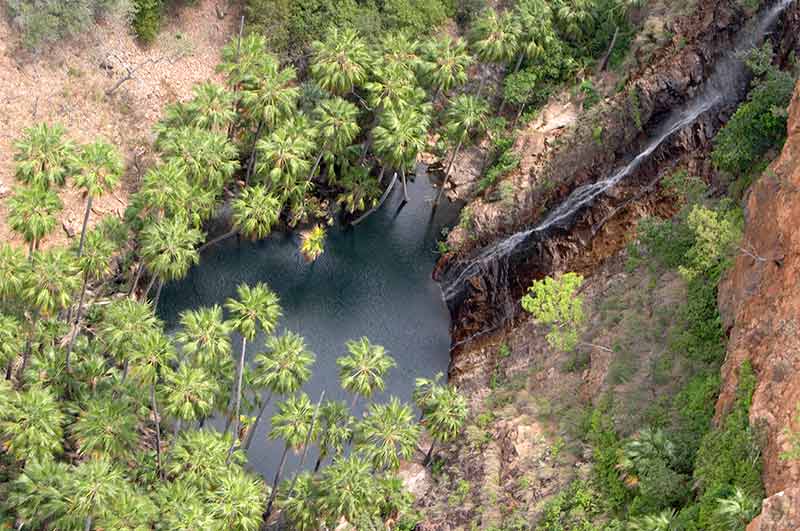
15 Things To Do In The Kimberleys
1- Discover The Kimberley Coast
The vastness of the landscape and the vivid colours of the land, sea and sky engage you in a world that is so utterly and completely different from the rest of Australia.
It’s no surprise the region has been a popular choice with filmmakers such as musical comedy Bran Nue Dae, which showcases Broome and the Kimberley coast, and Baz Luhrmann’s box office movie “Australia”.
Part of Australia’s North West, which is a wilderness of over a million square kilometres of bush, canyons, mountains and rivers, with the Kimberley in the north and the Pilbara in the south.
2- Explore Broome
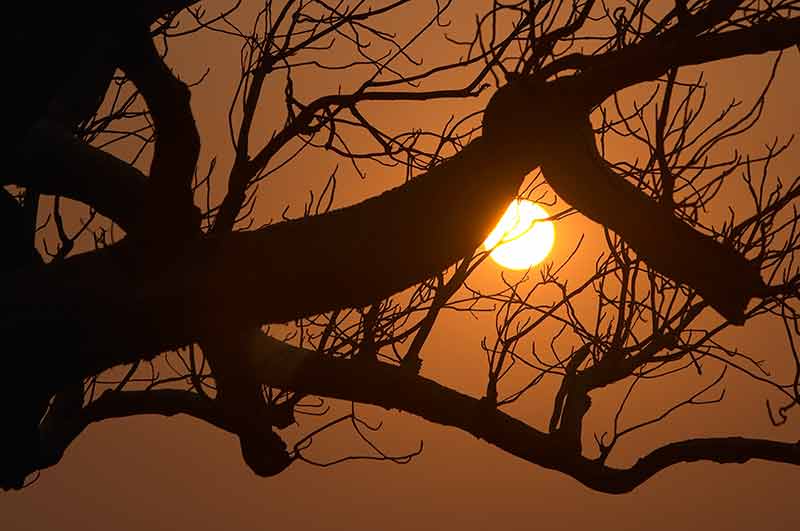
Remote and intensely colourful, Broome is a gateway to the Kimberley.
It’s a feast for the eyes with dazzling blue skies, orange-red pindan soil and boab trees. Gardens grow with ghost gums, palms, frangipani, hibiscus and bougainvillea.
There’s an air of mystery in Broome.
Discovered by English buccaneer William Dampier, 2350 kilometres from Perth on the shores of the Indian Ocean, pearl showrooms are dotted among art galleries and cafes serving wine, coffee and fresh barramundi.
Here, you never know whom you might bump into.
Famous faces often slip quietly into Broome and for those who love art or pearls, Broome is the kind of place you could easily spend up big.
3- Visit Kununurra
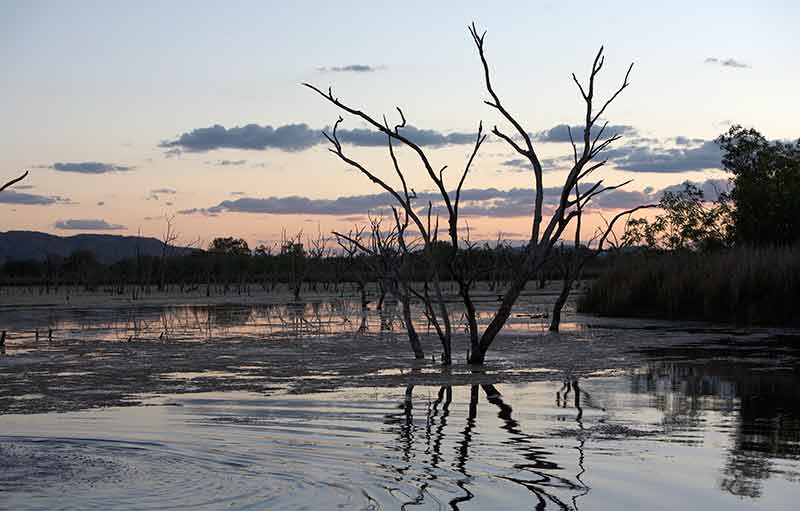
Another gateway to the Kimberley, Kununurra, has a laid-back pastoral vibe and a population of about 5000 residents.
Its main diamond showroom, Kimberley Fine Diamonds, does a roaring trade in pink Argyle diamonds, some fetching $100,000 or more.
4- Drive The Gibb River Road
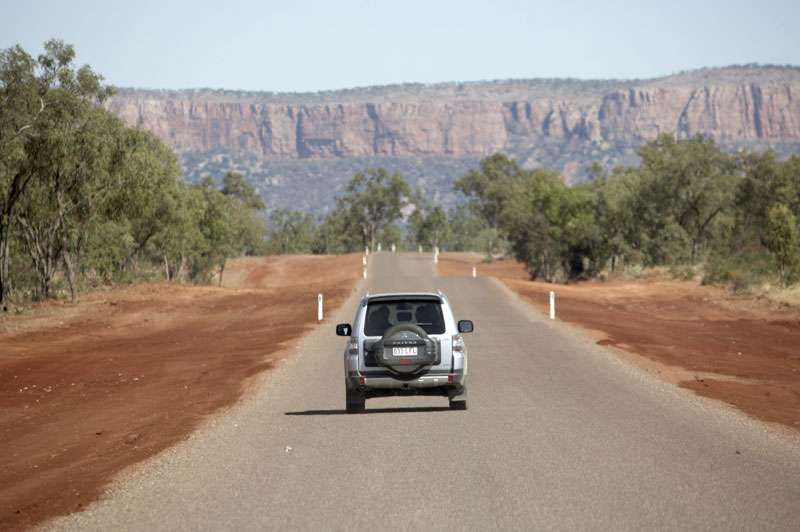
Driving in the outback is an unforgettable experience.
Take the Gibb River Road, which was once an old stock route used to drive cattle to Wyndham.
The two-lane dirt and gravel highway runs past gorges, stations and through a landscape dotted with boab trees, mountain ranges, valleys, hot springs and waterfalls.
5- Explore At El Questro Station
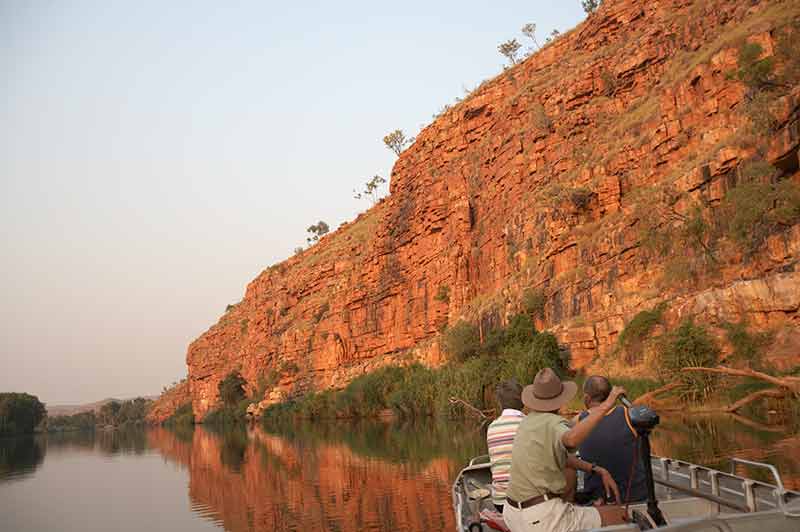
The helicopter sweeps over the landscape of the 400,000-hectare El Questro Station.
Below us are views of a landscape dotted with boab trees, the Cockburn mountain range, valleys, hot springs, waterfalls and rivers.
We are flying over the red and rugged Kimberley region which played a starring role in Baz Luhrmann’s movie “Australia”.
Our pilot points out filming locations in the movie such as Emma Gorge waterfall, a spot chosen for a romantic scene, and an out-of-the-way plain called the mudflats where stampede, river crossing and drought scenes were filmed.
We follow the Chamberlain River, landing on a rocky ledge next to the river.
El Questro offers both freshwater fishing, in the Chamberlain River, and saltwater fishing in the Durack River.
There are bounties of mangrove jack, bream and threadfin salmon but we’re here for the barramundi.
6- Go Fishing For Barramundi
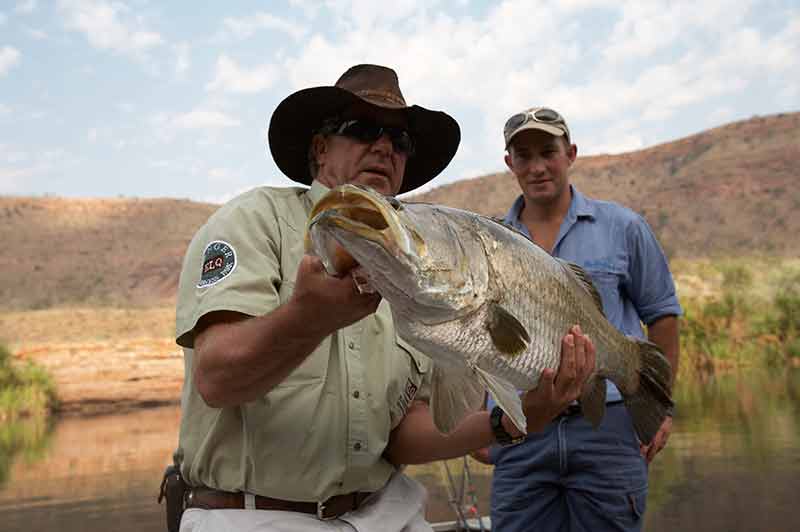
We wait for the rotors to slow then pick up our rods and head down to the water which is as still as a mirror.
As we climb into a dinghy tied to a tree along the riverbank, images of crocodiles flash through my mind.
I scan the banks but fortunately, there are no crocs.
My fishing companions are Chilli, our fishing guide and experienced angler, and Minty, a first-timer like me.
We learn that barramundi is a big fish that can weigh as much as 60 kilograms and grow to 1.8 metres long.
All barramundi begin life as males and take three to four years to mature. Around the age of five, they change gender and become female.
Chilli starts the boat’s motor and we follow the river to a peaceful spot where we rig up our lines and cast them in different directions. The fish start nibbling almost immediately.
Chilli’s first catch is a 60-centimetre barramundi, which we throwback into the river. A few minutes later, he catches another.
Then a fish tugs at my line and I excitedly reel it in but I’m disappointed when I discover I’ve hooked a catfish.
Five catfish later, they’re calling me the catfish queen.
The star of the day is Minty’s one-metre-long barramundi.
It puts up a good fight, wriggling and pulling the line then Chilli takes over and wins the tug of war while keeping his eye on the large freshwater crocodile lurking a few metres away.
At the end of the day, we have caught several 60 centimetre-plus barramundi and buckets of catfish, all of which are thrown back into the water.
Aside from the fishing, you could easily fill several days at El Questro hiking, horse rides, cruising the Chamberlain gorge or soaking in the tranquil Zebedee hot springs.
El Questro was established in 1903 but became a tourist park when a wealthy English couple Will and Celia Burrell purchased the property in 1990.
There’s a range of accommodation at El Questro including camping, air-conditioned riverside bungalows at the Station Township, tent-like cabins of Emma Gorge Resort and the upmarket El Questro Homestead.
But there’s no doubt in my mind, the highlight of my stay is the experience of flying to a remote spot along the Chamberlain River to fish for barramundi.
7- Go Horseriding At Home Valley Station
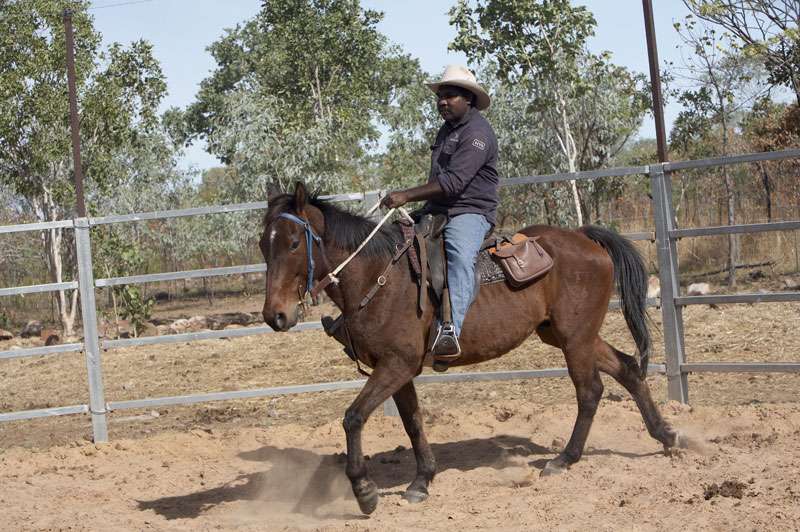
Riding a horse at Home Valley Station is a fun way to enjoy the stunning Kimberley landscape.
There’s nothing like being high up on a horse in the Kimberley with the sun blazing over vast savannah plains.
We ride past red rocky ridges that soar towards the clear blue sky. Brahman cattle meander idly in paddocks, chewing on clumps of grass.
The scenery is straight out of Baz Luhrmann’s movie “Australia”.
The vastness of the Kimberley is mind-boggling, stretching across 423,000 square kilometres in the far north. With this immense space comes a lot of room to think.
Riding on a horse gives you the opportunity to soak up the landscape and to connect with the scenery.
The best thing of all is you don’t need to be an experienced rider.
Even beginners can do it.
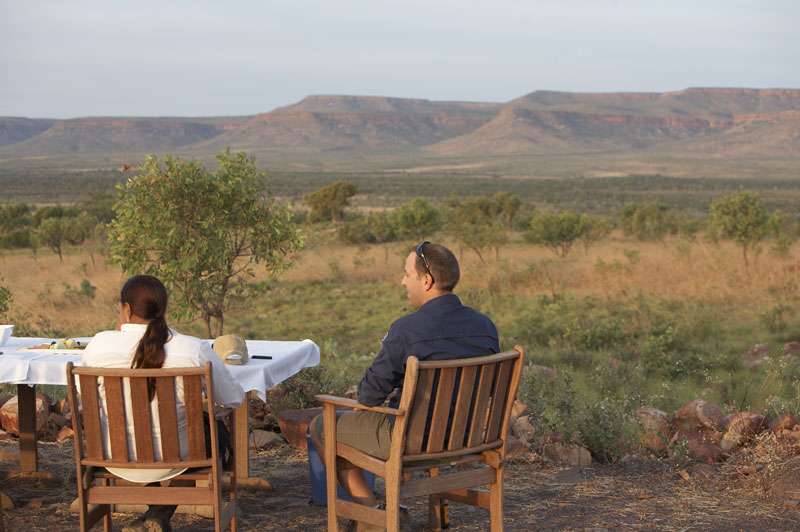
Our morning begins at Home Valley Station’s stables, where we gather around ferrier, musterer and now pastoral manager John Rodney (known as JR).
JR’s job is to break in and train the station’s horses and look after the station’s 6000 head of cattle.
Home Valley Station is both a working cattle station and a tourism property so JR is also in charge of guest activities that involve horses.
This includes horse riding and mini musters where six riders leave at sunrise to round up cattle for half a day.
In our group of six is a young woman from Amsterdam who has never been on a horse.
The look on her face tells me she wants to turn and run but JR’s keen eye picks up her hesitation and pays her special attention to make her feel comfortable.
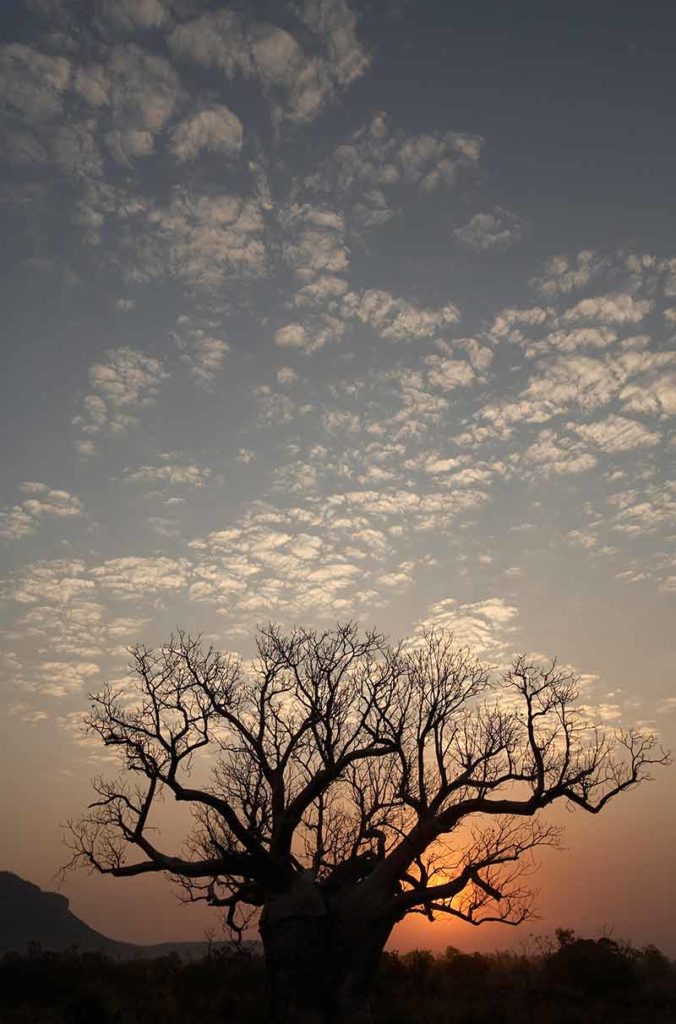
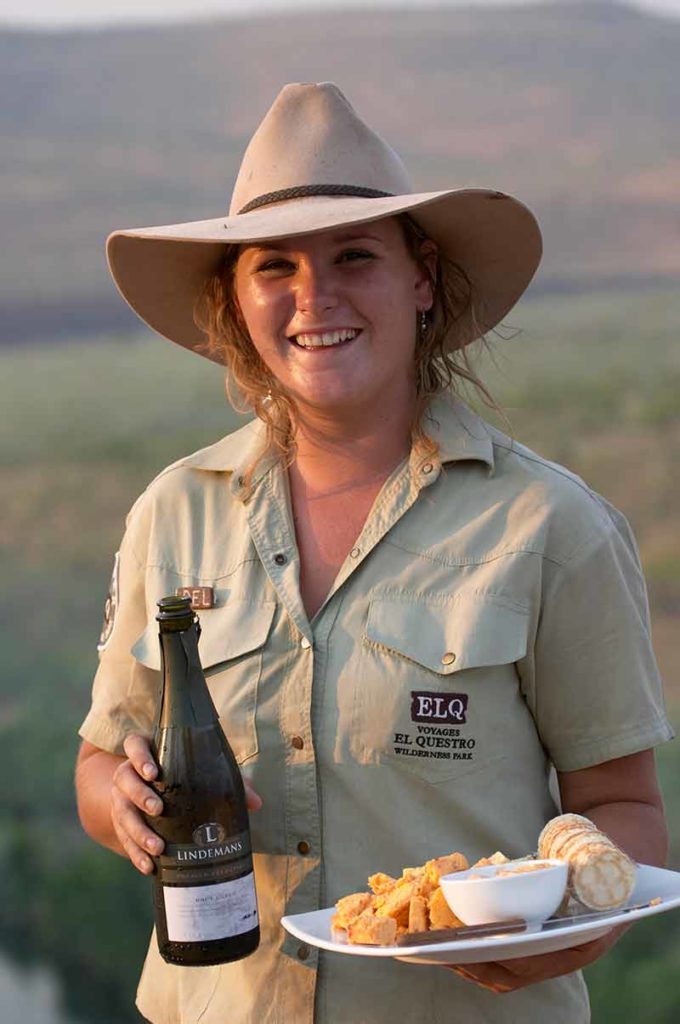
Before we’re allowed on the horses, we are given a thorough briefing and a training session on how to use the reins.
JR ties a set of reins to a post and demonstrates how to take control of the horse.
One by one, we all take turns to show JR we have understood his instructions on how to lengthen and shorten the reigns.
Once we’ve mastered the reins, we mount our horses in the yards and head towards the Cockburn Ranges.
Riding beside me is Cyril Yeeda. “I love riding here. The Kimberley is my home. It’s a beautiful place,” Yeeda says.
Yeeda is friendly but shy and is proud to have been part of the TAFE programme which was put in place to train indigenous men and women in tourism, hospitality and pastoral operations.
Growing up on a station in Halls Creek, also in the Kimberley, Yeeda has been riding horses most of his life.
After trying a few different things at Home Valley Station, he fell naturally into caring for the horses, working in the stables, taking out tourists on horse rides, and working with the cattle.
There’s a lot to learn from the health and wellbeing of horses, horse-shoeing, horsemanship, riding skills and how to muster cattle.
In the evening, after a drink and a meal at the Dusty Bar & Grill, we gather around the campfire and listen to the haunting tones of a didgeridoo.
It’s a perfect end to a tremendously enjoyable day in the Kimberley.
8- Hike The Bungle Bungles
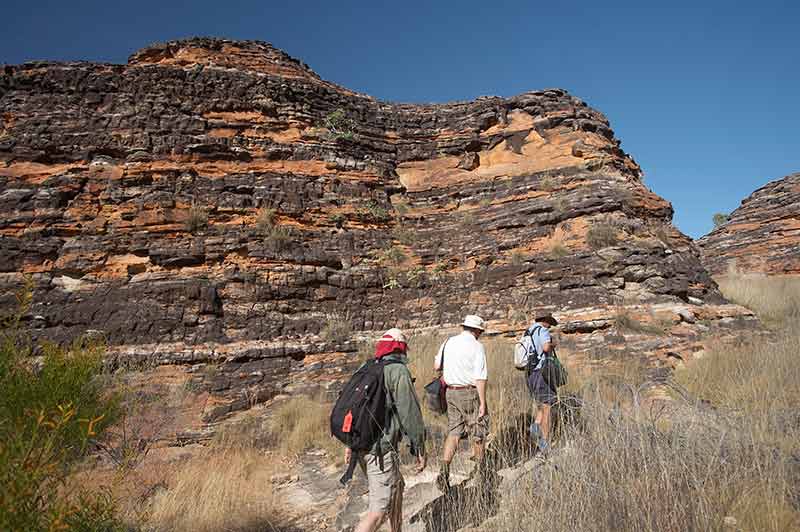
Another Kimberley delight is the World Heritage-listed Purnululu National Park where a flight-seeing trip shows off the spectacular beehive dome-shaped sandstone towers.
A light aircraft flight to the national park from Kununurra usually flies over Lake Argyle which, during the wet season, can swell to 40 times the size of Sydney Harbour.
The Bungle Bungles is one of the most stunning natural landmarks in Australia.
9- Go Glamping At Eco Beach
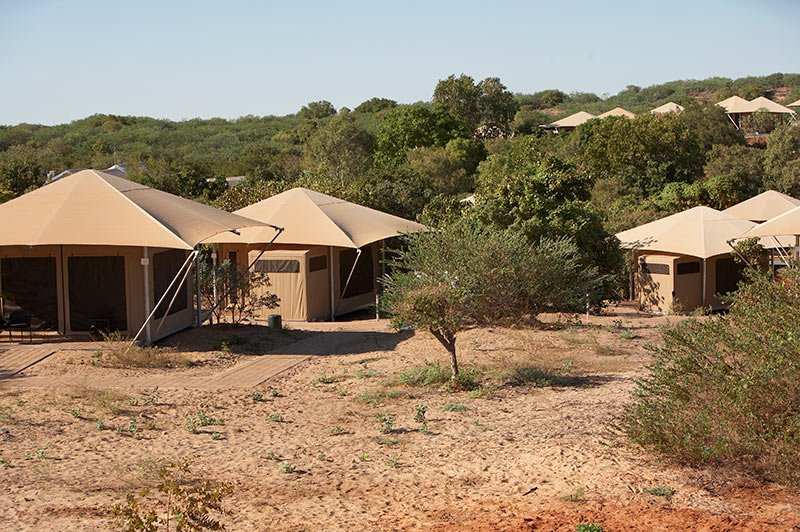
One of the best ways to experience the Kimberley region is a holiday under canvas.
In recent times, the growth of glamping or glamorous camping resorts has proven a boon for travellers partial to city luxuries.
From the Indian Ocean to the outback, glamping resorts in the Kimberley offer guests comfy beds, private showers and gourmet meals in some of its most pristine wilderness areas.
Popular glamps include Eco Beach Wilderness Resort, 130 kilometres south-west of Broome.
Eco Beach’s safari-style eco tents have partial views of the Indian Ocean and are decked out with king-size beds with linen, bedside tables, reading lamps, wardrobes and storage chests, en suite showers and toilets.
Tents also come with 20-litre eskis for storing snacks, drinks and ice available from the resort’s Jack’s Bar & Restaurant.
10- Tour Cygnet Bay Pearl Farm
200km north of Broome, Cygnet Bay Pearl Farm’s eight luxury safari-style tents are nestled between the foreshore and Kimberley rainforest woodlands.
They offer shared bathroom facilities and a communal kitchen.
A stay at the pearl farm offers a chance to learn the secrets of Western Australia’s pearling industry and explore the Dampier Peninsula.
11- Stay At Mitchell Falls Wilderness Lodge
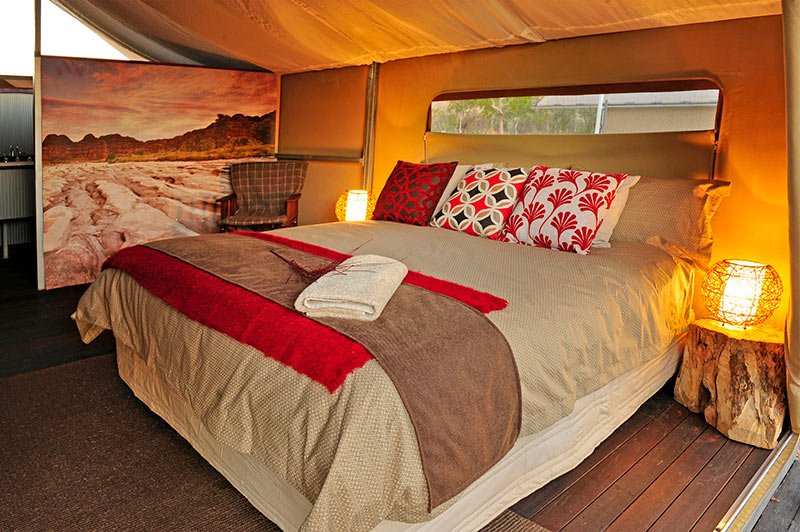
Further north, adventurous travellers can explore the Mitchell Plateau, with its rainforest, open woodland, valleys, creeks and stunning falls while staying in one of Mitchell Falls Wilderness Lodge’s 24 tented cabins.
The tented cabins have en-suites and guests are served home-style breakfasts, packed lunches and freshly prepared dinners with complimentary wine.
12- See Wildlife At Mornington Wilderness Camp
The highlight of a stay at Mornington Wilderness Camp, 550km east of Broome, is the opportunity to observe the Australian Wildlife Conservancy staff in action.
The non-profit organisation is dedicated to conserving Australia’s threatened wildlife and ecosystems.
In Mornington Sanctuary, these include the Gouldian finch, purple-crowned fairy-wren and red goshawk.
13- Lie By The Pool At Emma Gorge
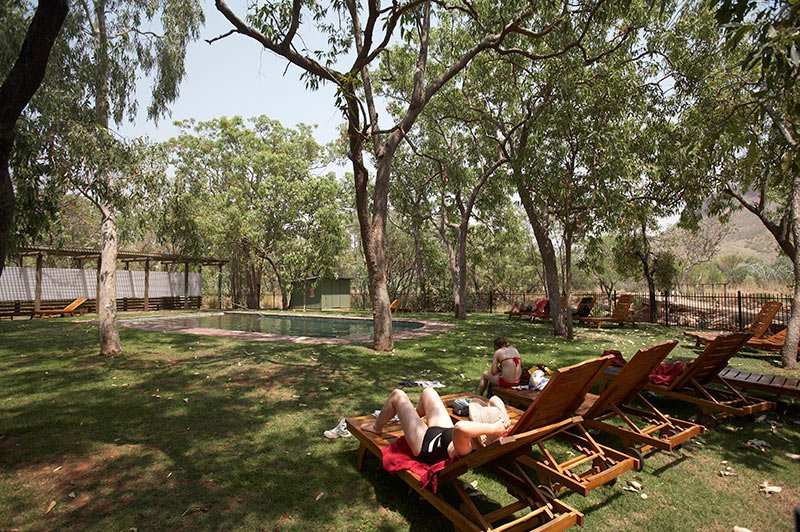
In the eastern Kimberley, staying at Emma Gorge Resort in El Questro Wilderness Park is an opportunity to drift off to sleep in a tented cabin.
Comfy beds come with quality linen and pillows.
Cabins have en suite bathroom facilities and sleep four.
Facilities at Emma Gorge include a swimming pool and lounge area shaded by native trees and landscaped gardens.
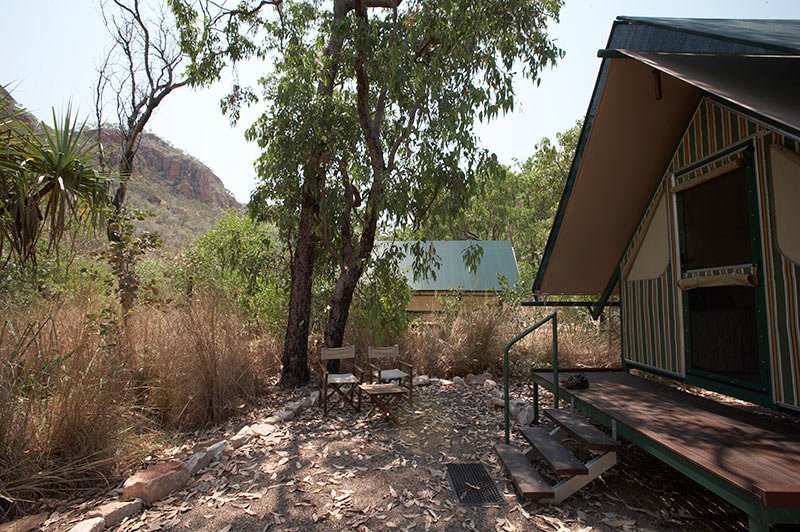
El Questro offers a range of tours and activities such as scenic hikes (at several gorges and to Zebedee Springs), cruises on the Chamberlain River and helicopter flights.
14- Sleep In A Safari Tent At Home Valley Station
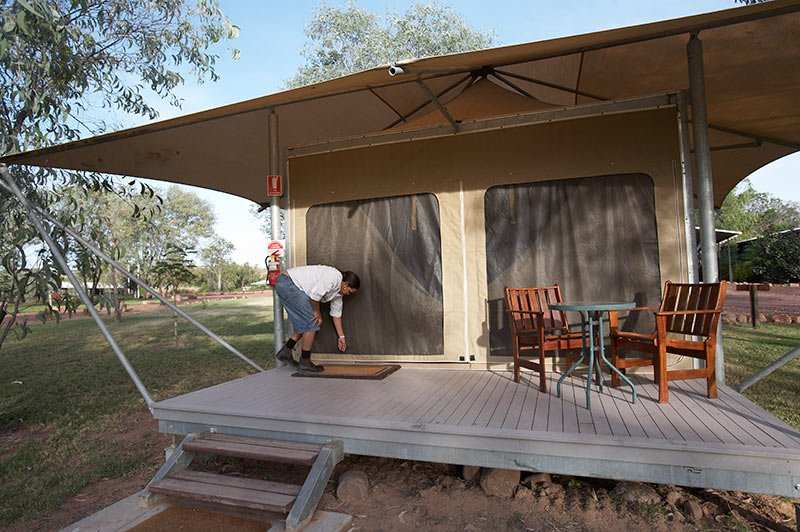
Not far from El Questro, Home Valley Station’s safari-style eco-tents are surrounded by bushland.
The eco-tents have extra-high pitched rooftops and large canvas windows on all sides, which can be fully drawn back at night to reveal a blanket of stars.
The tents have comfortable king-sized beds, timber floors, lovely timber furniture, power, lighting, fans and decks.
Bathroom facilities are close by and tents are serviced daily.
Activities on the working cattle station include horse riding and fishing.
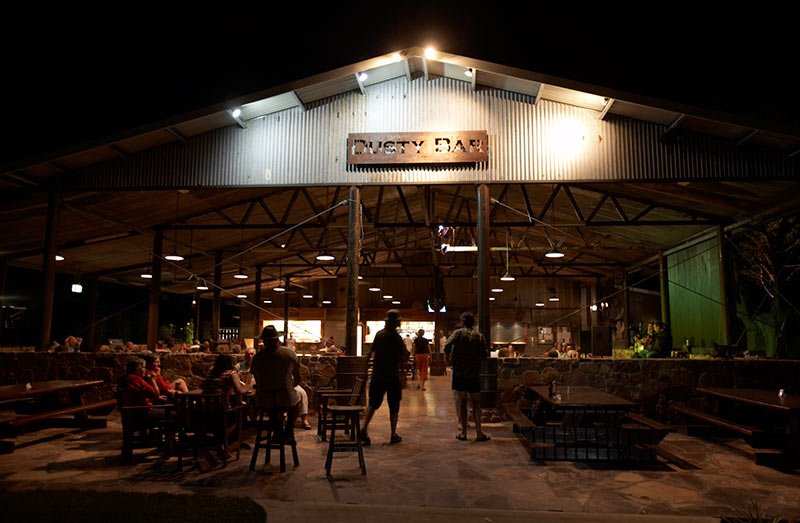
15- Visit The Pilbara
Also in Western Australia, the Pilbara region has some of the world’s most ancient landscapes which date back two billion years ago and cover an area of 400,000 square kilometres.
Most people associate the Pilbara with massive iron ore mining, rail and port operations that came with the mining boom.
But it’s also home to many natural wonders, national parks and some of the country’s most precious ancient aboriginal rock art.
Its remoteness makes it a wonderful destination for rugged outback driving and camping under the stars.
Of the Pilbara’s three national parks, Karijini National Park is best for its dramatic creeks, spectacular gorges and towering sheer-sided chasms up to 100 metres deep.
Newman, the gateway to Rudall River National Park, is the place to go for tours of the largest open-cut iron ore mine in the world.
While Millstream-Chichester National Park is a picture-perfect riot of wildflowers in winter.
The Dampier Archipelago and Mackerel Islands on the Pilbara coast has hundreds of islands with dazzling white beaches and untouched coral gardens. The Dampier coast is also where turtles nest and migrating humpback whales frolic.
For more WA experiences, read:
How To Get To The Kimberley
Fly to Perth with Qantas, Jetstar or Virgin Blue then on to destinations in the northwest such as Broome, Kununurra, Karratha and Port Hedland.
Experience the open spaces of the North West in a 4WD; rentals are available in most major towns. The regions are also serviced by Greyhound Australia.
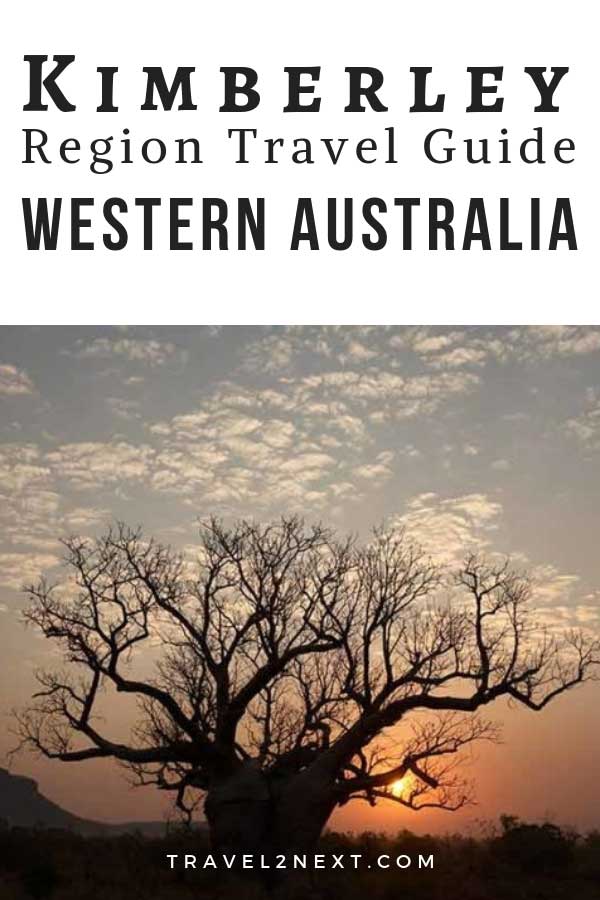
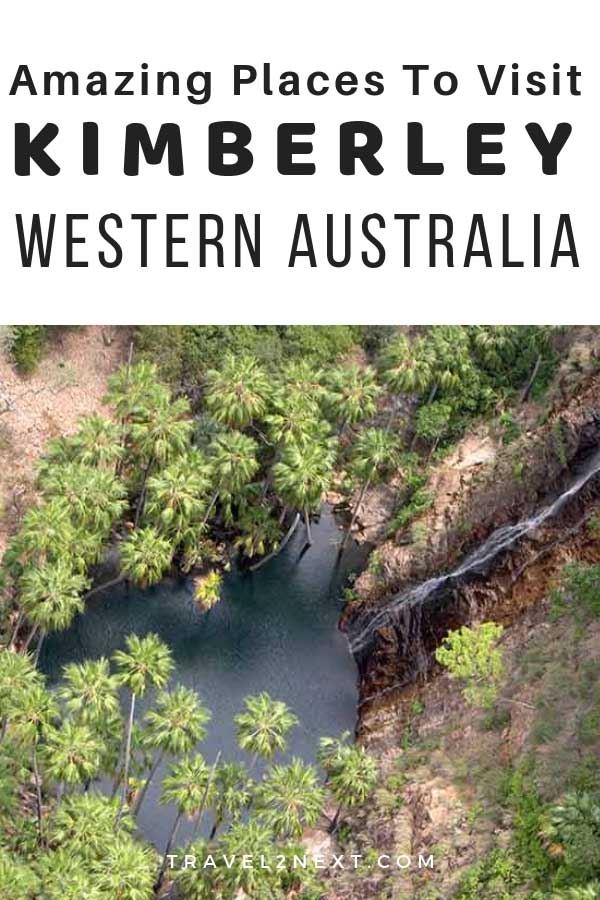
Plan Your Trip

Rent A Car – Find the best car rental rates at Discover Cars. They compare car hire companies to provide you with the best deal right now.

Find A Hotel – If you’re curious about this article and are looking for somewhere to stay, take a look at these amazing hotels.
